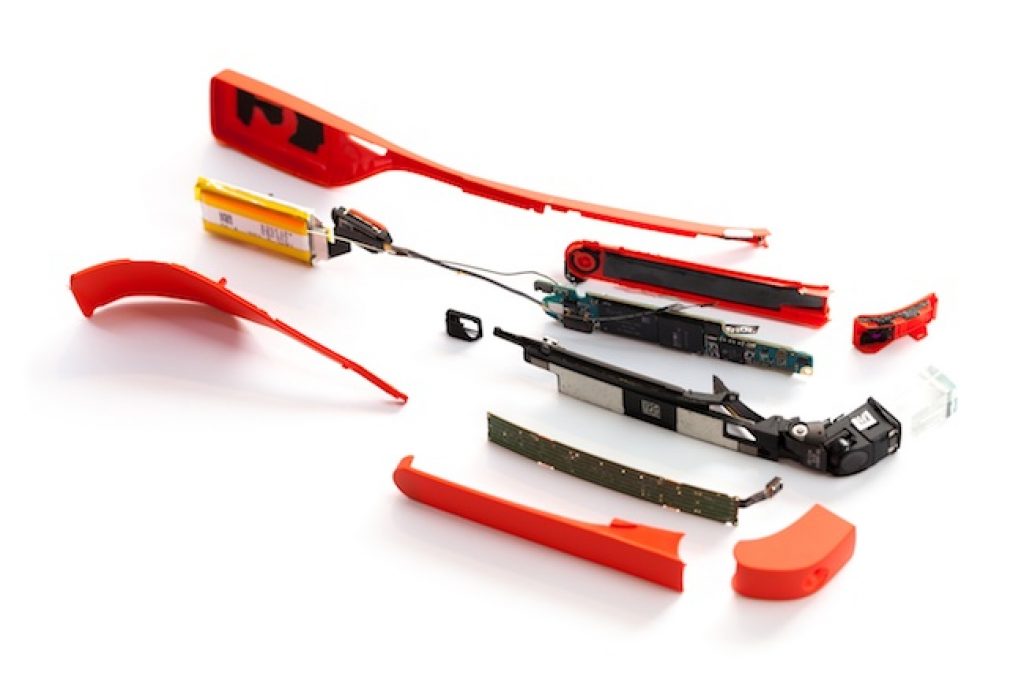Earlier this month, I passed along word of the teardown of the Leap Motion gesture interface peripheral, one of the better-known recent embedded vision examples by virtue of its consumer electronics focus and consequent extensive potential-customer interest and press coverage. This time, with thanks to EDN Magazinefor the heads-up, I'm able to pass along to you the SparkFun-sponsored teardown of another popular embedded vision example, the Google Glass head-mounted communications and computing device. Among other attributes, Google Glass has the potential to singlehandedly push augmented reality much further into the public consciousness than has been possible to date.
As you read through the analysis, you might be surprised at how elementary the bill of materials list is. This is fundamentally the case because Glass is intended for use in conjunction with a Bluetooth- or Wi-Fi-connected smartphone, tablet or computer, versus being predominantly used in a standalone fashion. As such, the current $1500 price tag for the "developer" version of the device will likely be significantly lowered when Glass is more broadly released, in order to encourage widespread adoption. A target price tag of "around the cost of current smartphones" has already been postulated, for example.


